1. Overview
Yuriko, Princess Mikasa, born Yuriko TakagiTakagi YurikoJapanese, was a prominent member of the Imperial House of Japan as the wife of Takahito, Prince Mikasa. Prince Takahito was the fourth son of Emperor Taishō and Empress Teimei. At the time of her death, Princess Yuriko was the last surviving paternal great-aunt by marriage of Emperor Naruhito and held the distinction of being the oldest member of the imperial family. She was also the final living member of the Imperial House who was born during the Taishō era (1912-1926). Her life spanned over a century, witnessing profound changes in Japan from the pre-war period through World War II and into the modern Reiwa era.
2. Early Life and Background
Yuriko Takagi was born into an aristocratic family, tracing her lineage through distinguished samurai and courtier houses.
2.1. Birth and Family
Princess Mikasa was born as Yuriko Takagi on June 4, 1923, at her family's residence in Akasaka Aoyama Takagicho, Tokyo, which is now part of Minato Ward, Tokyo. She was the second daughter of Viscount Masanari Takagi (1894-1948) and his wife, Kuniko Irie (1901-1988). Her father, Masanari Takagi, was a member of the Takagi clan, who were formerly lords of the small feudal domain of Tan'nan in Kawachi Province. Through her father, she was a great-great-granddaughter of Hotta Masayoshi, a significant rōjū (shōgunal minister) during the Bakumatsu period.
Her mother, Kuniko Irie, was the second daughter of Viscount Irie Tamemori and was descended from the noble Yanagihara clan. Kuniko was a second cousin of Emperor Shōwa. The Emperor's grandmother, Lady Yanagiwara Naruko, who was a concubine of Emperor Taishō, was Kuniko's great-aunt. Yuriko also had an elder sister, Kinu, and two younger sisters, Momoko and Sayoko. Her maternal uncle was Irie Sukemasa, who served as Grand Chamberlain to Emperor Shōwa.
In 1948, her father, Masanari Takagi, who was also an entomologist, faced financial hardship following the abolition of the peerage system and the loss of his valuable book and specimen collection in wartime fires. He disappeared in July 1948 and was later found to have died by suicide in November of the same year in the mountains of Okutama, leaving a note detailing his struggles with inflation and the difficulties faced by former aristocrats.
2.2. Education
Yuriko began her academic journey at the Girls' Gakushuin Kindergarten in 1928. She later enrolled in the Girls' Gakushuin Main Course in April 1931. She successfully completed her studies and graduated from Gakushuin Women's Academy in 1941.
3. Marriage and Imperial Life
Yuriko's marriage to Prince Mikasa Takahito marked her entry into the Imperial House of Japan, where she undertook significant responsibilities and endured challenging historical periods.
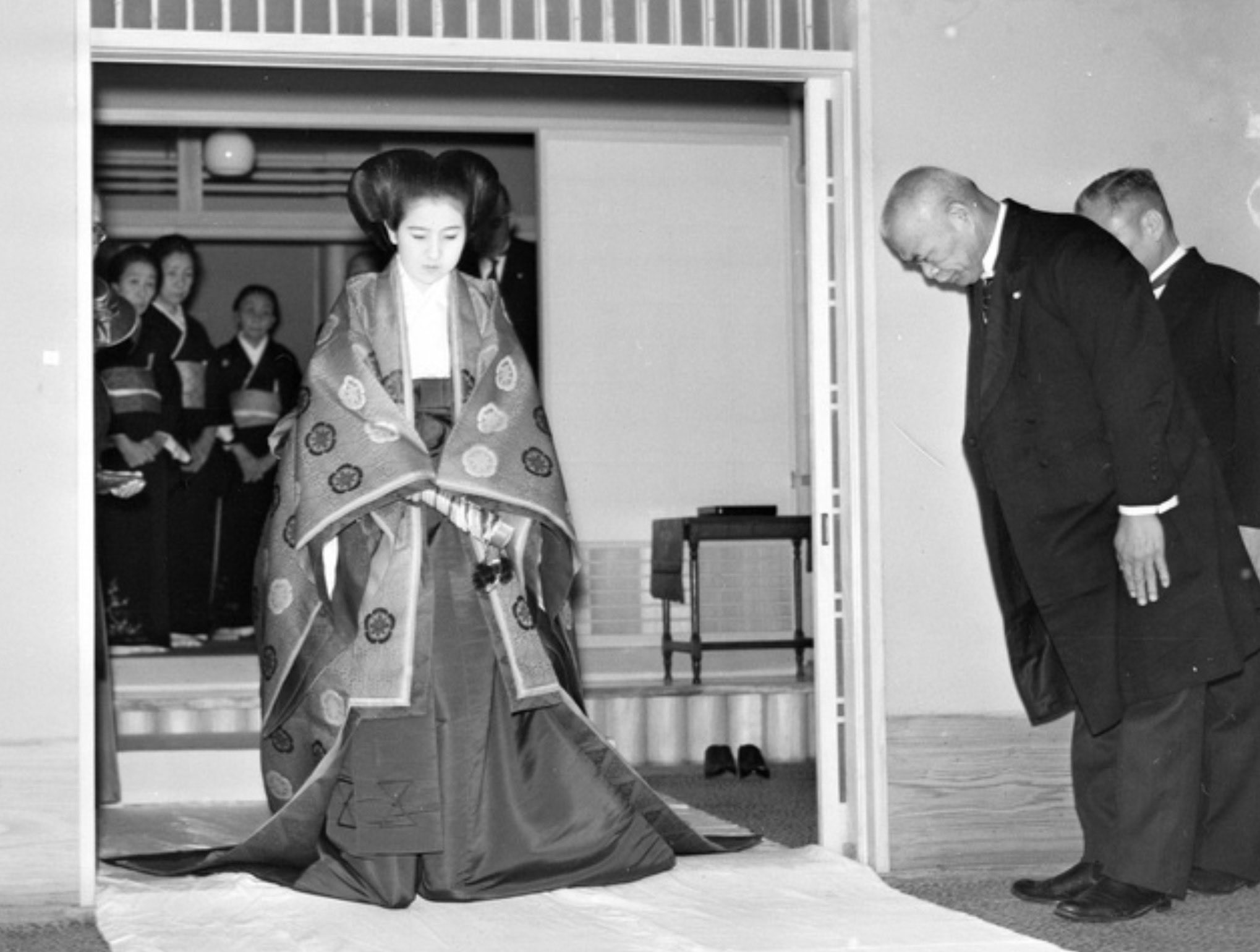
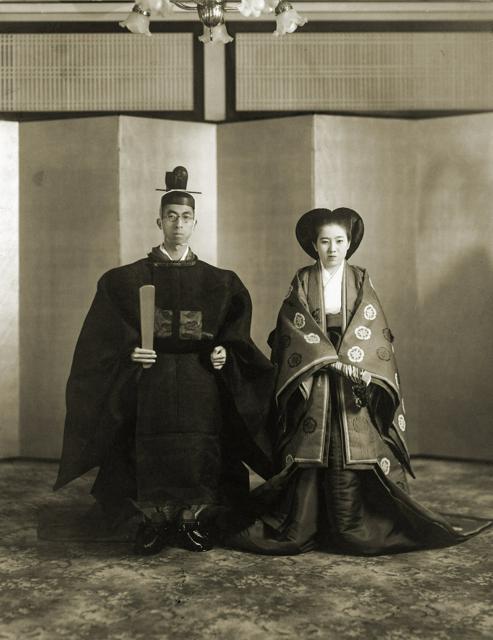
3.1. Engagement and Wedding
On March 29, 1941, the engagement of Yuriko Takagi to her second cousin once removed, Takahito, Prince Mikasa, was formally announced. The engagement ceremony took place on October 3, 1941, followed by the wedding ceremony on October 22, 1941. This significant event occurred less than two months before the Japanese attack on Pearl Harbor, which led to the United States' entry into World War II. Following her marriage, Yuriko was officially styled as Her Imperial Highness The Princess Mikasa.
3.2. Role within the Imperial Family
The early years of Princess Yuriko's imperial life were marked by the turmoil of World War II. In May 1945, her residence, the Aoyama East Palace in Tokyo, was completely destroyed by the US fire bombings. She and her then one-year-old daughter, Princess Yasuko, were forced to live in an air-raid shelter. Princess Yuriko described the atmosphere during the final months of the war as "very frightening," characterized by "heated arguments and tension, as if bullets were about to fly" among the young officers who also sought refuge in the imperial shelter. After the war, the family moved to a temporary residence in Isshiki, Hayama Town, Kanagawa Prefecture, and later to a house in Kamiosaki, Shinagawa Ward, Tokyo, which served as their temporary residence for 13 years. In the financially challenging post-war years, Princess Yuriko became deeply involved in domestic duties to support her family.
Princess Yuriko remained a steadfast companion to her husband, Prince Mikasa. She frequently visited him in the hospital during his final months, and on October 22, 2016, they celebrated their 75th wedding anniversary in his hospital room. Prince Mikasa passed away five days later, on October 27, 2016, with Princess Yuriko by his side. Following his death, she took on the solemn role of chief mourner for his funeral ceremony. Upon her husband's passing, Princess Yuriko became the head of the Mikasa-no-miya branch of the Imperial Family at the age of 93.
4. Children
Prince and Princess Mikasa had five children: three sons and two daughters. All three of their sons predeceased them. Their two daughters left the imperial family upon marriage, as per imperial law. As of her death, they had nine grandchildren and nine great-grandchildren. Of their grandchildren, three granddaughters remain within the imperial family, while two other granddaughters also lost their imperial status upon marriage.

| Image | Name | Birth | Death | Marriage Date | Spouse | Issue |
|---|---|---|---|---|---|---|
| Yasuko Konoe (formerly Princess Yasuko of Mikasa, 甯子内親王Yasuko NaishinnoJapanese) | April 26, 1944 | December 16, 1966 | Tadateru Konoe | Tadahiro Konoe | ||
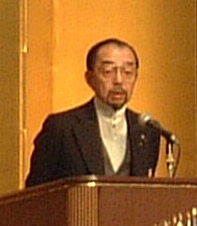 | Prince Tomohito of Mikasa (寬仁親王Tomohito ShinnōJapanese) | January 5, 1946 | June 6, 2012 | November 7, 1980 | Nobuko Asō | Princess Akiko Princess Yōko |
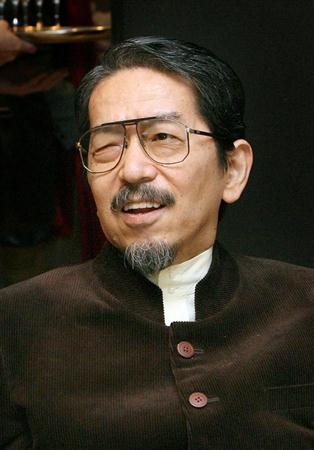 | Yoshihito, Prince Katsura (桂宮宜仁親王Katsura-no-miya Yoshihito ShinnōJapanese) | February 11, 1948 | June 8, 2014 | None | ||
| Masako Sen (formerly Princess Masako of Mikasa, 容子内親王Masako NaishinnōJapanese) | October 23, 1951 | October 14, 1983 | Masayuki Sen (later Sōshitsu Sen XVI) | Akifumi Kikuchi Makiko Sakata Takafumi Sen | ||
 | Norihito, Prince Takamado (高円宮憲仁親王Takamado-no-miya Norihito ShinnōJapanese) | December 29, 1954 | November 21, 2002 | December 6, 1984 | Hisako Tottori | Princess Tsuguko Noriko Senge Ayako Moriya |
5. Public Service and Activities
Princess Mikasa dedicated a significant portion of her life to public service, particularly in charitable endeavors and the preservation of Japanese cultural heritage.
5.1. Charitable and Social Contributions
Princess Mikasa served as the honorary president of various charitable organizations. Her commitment to public welfare was evident in her long-standing involvement with the Japanese Red Cross Society, where she held the position of Honorary Vice-President.
In 1948, she became the President of the Imperial Gift Foundation Boshi-Aiiku-kai, an organization dedicated to maternal and child health. She held this position for over 60 years, finally stepping down in September 2010. Throughout her tenure, she frequently attended formal occasions in Tokyo and other parts of Japan related to charities focused on improving the health and well-being of mothers and children.
5.2. Cultural Preservation
Beyond her social contributions, Princess Mikasa was also deeply involved in the preservation and promotion of traditional Japanese culture. She served as the Honorary President of the Ethnic Costume Culture Promotion Association from March 1979 to March 2010, contributing to efforts to maintain and popularize traditional Japanese attire. Additionally, she was the Honorary President of the Chūgū-ji Hōsan-kai, an organization dedicated to supporting the Chūgū-ji temple. Her personal emblem, or O-shirushi, was the Princess tree (Kiri), a symbol often associated with the Imperial Family and traditional Japanese artistry.
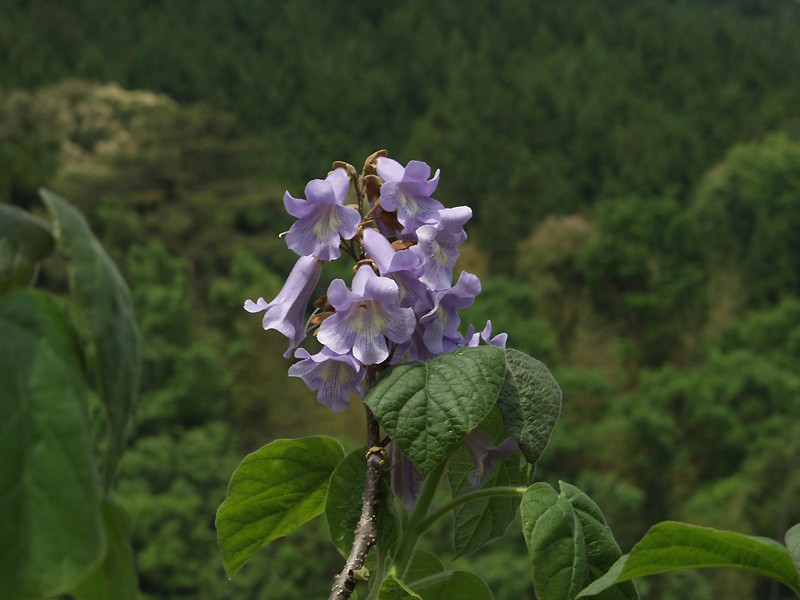
6. Later Life and Health
In her later years, Princess Yuriko faced a series of health challenges, demonstrating remarkable resilience as she continued to live a long life.
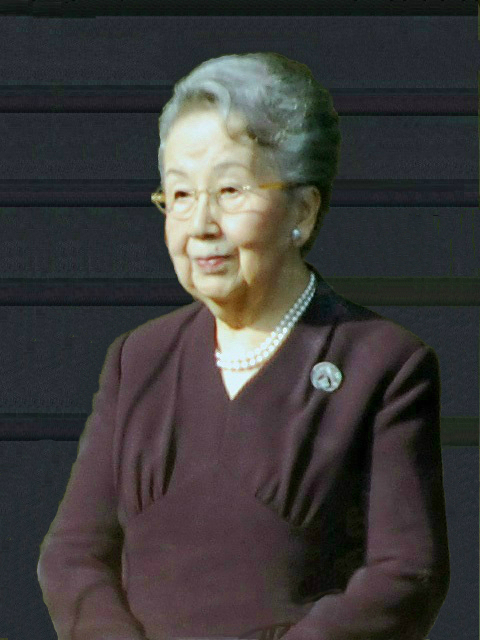
She had used a pacemaker since 1999. In 2007, she underwent surgery for colon cancer. She was notably absent from the 2019 enthronement ceremony of Emperor Naruhito, a testament to her declining health at the time.
In September 2020, at the age of 97, Princess Yuriko was hospitalized with symptoms of heart failure and pneumonia. She was discharged after two weeks following treatment. In March 2021, she was admitted to St. Luke's International Hospital due to arrhythmia. Her condition was not critical, and she was discharged within a few days as her symptoms subsided. In July 2022, at 99 years old, she tested positive for COVID-19 and was hospitalized with a fever exceeding 98.6 °F (37 °C) and a slight cough.
On June 4, 2023, Princess Yuriko celebrated her 100th birthday, becoming the oldest member of the Imperial Family. In a statement released for her centennial, she reflected on her life, recalling how she had created photo albums for each of her family members and kept childcare diaries for her five children, leading a fulfilling life despite being pressed for time. At 100, she expressed her joy in watching her grandchildren and great-grandchildren grow, and her continued desire to pray for the happiness of the people. The Imperial Household Agency reported that for her health, she engaged in about 15 minutes of exercise daily, following television programs. On sunny days, she enjoyed sunbathing in her palace garden or taking walks around the Akasaka Estate in a wheelchair. Her daily routine included reading multiple newspapers and magazines, and she enjoyed watching news and baseball games on television.
In early March 2024, Princess Yuriko was again hospitalized at St. Luke's International Hospital after experiencing symptoms of a mild cerebral infarction and aspiration pneumonia. Although her condition was stable and she was conscious and responsive, she was initially placed in the intensive care unit due to a significant amount of phlegm. Her right arm and leg, which had been difficult to move, recovered considerably, and she was transferred to a general ward on March 11. However, on March 18, the Imperial Household Agency announced that she had experienced symptoms of heart failure and a new cerebral infarction, making it difficult for her to move her right arm and leg again. Her treatment continued at St. Luke's International Hospital. By March 25, her symptoms of heart failure and cerebral infarction had significantly improved, returning to a level close to her initial transfer to the general ward, and she began rehabilitation.
Princess Yuriko celebrated her 101st birthday on June 4, 2024, while still in the hospital. She received visits from her daughter-in-law Hisako, Princess Takamado, and her granddaughters Princess Akiko, Princess Yōko, and Princess Tsuguko, with Princess Akiko presenting her with flowers. On August 16, she was readmitted to the hospital's intensive care unit after being diagnosed with pneumonia. Her condition improved, and she returned to a general ward on September 9.
An examination conducted on November 7, 2024, revealed a decline in her overall body function, including her heart and kidneys. Her health continued to deteriorate, and by November 9, she was visited by several immediate relatives, including Princess Akiko, who returned urgently from the United Kingdom, Princess Hisako, Princess Yōko, and Yasuko Konoe. Princess Nobuko, her eldest daughter-in-law, canceled her visit to Kyoto to be with Princess Yuriko. On November 11, the Imperial Household Agency announced that Princess Yuriko's health was rapidly worsening and that her consciousness was "in a reduced state." Emperor Naruhito and Empress Masako were informed of her critical condition and expressed their concern. On November 14, Yasuhiko Nishimura, the Grand Steward of the Imperial Household Agency, reported that Princess Yuriko was losing consciousness.
7. Death and Funeral
Princess Yuriko's passing marked the end of an era for the Japanese Imperial Family, leading to a period of mourning and traditional funeral rites.
On November 15, 2024, at 6:32 am JST, Princess Mikasa died at St. Luke's International Hospital in Tokyo, at the age of 101. She was surrounded by her granddaughters Princess Akiko, Princess Yōko, and Princess Tsuguko, as well as her daughter-in-law Princess Hisako. The Imperial Household Agency officially stated her cause of death as "old age," though some Japanese news outlets later reported it as pneumonia. Her body was subsequently transported back to Tokyo.
Following her death, the Imperial Family entered a period of mourning. The families of Emperor Naruhito, Emperor Emeritus Akihito, Prince Fumihito of Akishino, and Prince Masahito of Hitachi observed a five-day mourning period, while the direct descendants from the Mikasa and Takamado branches observed a 30-day mourning period. Emperor Naruhito canceled his official duties as a mark of respect. Emperor Emeritus Akihito and Empress Emerita Michiko also conveyed their condolences.
Private rites for Princess Yuriko began with the "Ofuneiri" (ceremony of encoffining) held on November 16 at the Mikasa estate, attended by all members of the Imperial Family. The "Seishin Ikō no Gi" (ceremony of transferring the coffin to the altar) took place on November 24 at her residence in Minato Ward, followed by the wake, which concluded on November 25. Attendees at the wake included members of the Japanese Imperial Family, such as Crown Prince Fumihito, Crown Princess Kiko, and Princess Aiko, as well as Japanese Prime Minister Shigeru Ishiba and his cabinet. Emperor Naruhito, Empress Masako, Emperor Emeritus Akihito, and Empress Emerita Michiko, who typically do not attend farewell services, visited her residence to pay their respects shortly before the wake.
Princess Yuriko's main funeral ceremony, known as the "Rensō no Gi," was held on November 26, 2024, at Toshimagaoka Cemetery in Tokyo's Bunkyo Ward, with 481 people in attendance. Her granddaughter, Princess Akiko of Mikasa, served as the chief mourner for both the wake and the funeral. After the funeral ceremony, her body was cremated at Ochiai Funeral Hall, and her ashes were interred next to those of her husband, Prince Mikasa Takahito, at the Mikasa-no-miya family plot within Toshimagaoka Cemetery. Among the items placed with her for burial were family photographs, the baby teeth of her five children which she had preserved, a kimono hand-sewn by her mother Kuniko Takagi, and kanji puzzles that she enjoyed in her later years.
The Japanese government announced that her funeral cost approximately 325.00 M JPY (around 2.10 M USD), funded from reserve funds. Additionally, about 10.16 M JPY (around 67.00 K USD) was returned to the national treasury, representing four months of her imperial allowance, as half of her allowance had been paid in October. Her hospitalization expenses from March to November were covered by "Imperial Court Expenses," which are public funds.
Further post-funeral rites included the "Rensōgo Ichinichi Kenshasai no Gi" (ceremony of the provisional shrine one day after the funeral) at the Mikasa estate and the "Rensōgo Ichinichi Bosho Sai no Gi" (ceremony at the grave one day after the funeral) at Toshimagaoka Cemetery, both on November 27. The mourning period for Princess Yuriko, largely following pre-war imperial funeral regulations, will continue for one year, culminating in the "Bosho Ichishūnen Sai no Gi" (ceremony at the grave on the first anniversary) on November 15, 2025. Emperor Naruhito and Empress Masako, along with Emperor Emeritus Akihito and Empress Emerita Michiko, did not attend the main funeral ceremonies as per custom, but dispatched imperial envoys and paid their respects at the Mikasa-no-miya family grave after the "Rensōgo Ichinichi Bosho Sai no Gi."
8. Assessment and Legacy
Princess Yuriko's life was a testament to longevity and adaptability within the Japanese Imperial Family. As the oldest member of the Imperial House and the last living imperial born in the Taishō era, she served as a direct link to a bygone era of Japanese history. She lived through the tumultuous years of World War II, the post-war reconstruction, and the subsequent periods of rapid economic growth and social change, witnessing the reigns of five emperors (Taishō, Shōwa, Akihito, Naruhito). Her experiences, including the destruction of her home during the Tokyo fire bombings and the financial struggles of the Imperial Family in the post-war period, provided a unique perspective on the challenges faced by the imperial institution.
Her dedication to public service, particularly in the areas of maternal and child health through the Imperial Gift Foundation Boshi-Aiiku-kai and her long association with the Japanese Red Cross Society, underscored her commitment to the welfare of the Japanese people. She also contributed to the preservation of traditional Japanese culture, reflecting a deep respect for heritage. Her quiet dignity and steadfast support for her husband, Prince Mikasa, throughout their 75-year marriage, including her role as chief mourner at his funeral, exemplified her devotion to her family and her imperial duties. Her passing marked a significant moment, closing a chapter in the history of the Japanese Imperial Family.
9. Honors
Princess Yuriko received numerous national and foreign honors throughout her life, acknowledging her status and contributions.
9.1. National
Grand Cordon of the Order of the Precious Crown Grand Cordon of the Order of the Precious Crown (October 22, 1941)
Dame of the Decoration of the Red Cross Dame of the Decoration of the Red Cross
Recipient of the Red Cross Medal Recipient of the Red Cross Medal
9.2. Foreign
- Empire of Iran: Member 2nd Class of the Order of the Pleiades
- Empire of Iran: Commemorative Medal of the 2500th Anniversary of the founding of the Persian Empire (October 14, 1971)
- Netherlands: Inauguration Medal 1980 (April 30, 1980)
- Netherlands: Knight Grand Cross of the Order of the Crown
- Ethiopian Empire: Order of the Queen of Sheba
9.3. Honorary positions
- Reserve Member of the Imperial House Council (multiple terms: September 1963 - September 1967; September 2007 - September 2015; September 2019 - September 2023)
- Honorary Vice-President of the Japanese Red Cross Society
- President of the Imperial Gift Foundation Boshi-Aiiku-kai (April 1948 - September 2010)
- Honorary President of the Ethnic Costume Culture Promotion Association (March 1979 - March 2010)
- Honorary President of the Chūgū-ji Hōsan-kai
- Member of the Imperial House Council (September 1991 - September 2007)
10. Genealogy
Yuriko, Princess Mikasa, was born into the Takagi family, a distinguished lineage with roots in both the samurai and courtier aristocracy of Japan.
Her father was Masanari Takagi, a Viscount and the 14th head of the Tan'nan Takagi family. Her paternal grandfather was Masayoshi Takagi, and her paternal grandmother was Senko Takagi, daughter of Matsudaira Terutoshi, the 9th lord of the Takasaki Domain. Through this line, she was a great-great-granddaughter of Hotta Masayoshi, a prominent figure during the Bakumatsu period.
Her mother was Kuniko Irie, the second daughter of Viscount Irie Tamemori. The Irie family was a branch of the Reizei family, which descended from the Fujiwara clan and was known for its contributions to waka poetry, tracing its ancestry back to the medieval poet Fujiwara no Teika. Her maternal grandmother was Nobuko Yanagihara, daughter of Count Yanagihara Sakimitsu. Nobuko was also a niece of Lady Yanagiwara Naruko, who was a concubine of Emperor Taishō and the birth mother of Emperor Shōwa. This connection made Princess Yuriko a second cousin of Emperor Shōwa. Her maternal uncle was Irie Sukemasa, who served as Grand Chamberlain to Emperor Shōwa.
Princess Yuriko's descendants include her two daughters, Yasuko Konoe and Masako Sen, and the children of her three sons, Prince Tomohito of Mikasa, Prince Yoshihito Katsura, and Prince Norihito Takamado. As of her death, she had nine grandchildren and nine great-grandchildren.
11. External Links
- [http://www.kunaicho.go.jp/e-about/activity/activity05.html Her Imperial Highness Princess Mikasa and her family at the Imperial Household Agency website]
- [http://www.jrc.or.jp/english/about/glance.html Japan Red Cross Society: At a glance]

